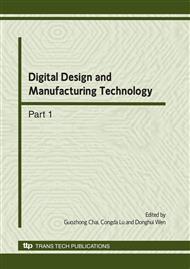p.550
p.555
p.559
p.564
p.568
p.573
p.578
p.583
p.587
Path Generation and Posture Angle Control of Tool for Robotic Polishing System
Abstract:
To improve the quality and efficiency of the finish, industrial robots are used to polish the workpiece cavities with complex shapes. This paper presents key technologies of robotic polishing system including path generation, tool orientation control and G-code converting. Robot path data is generated automatically from the NC data, and tool posture angle is superadded to the robotic polishing path according to the requirement of the robotic polishing technology. Specialized software is developed to automatically generate a program, which includes the path data and tool posture angle, and this program is uploaded to the robot controller for the die polishing process.
Info:
Periodical:
Pages:
568-572
Citation:
Online since:
March 2010
Authors:
Keywords:
Price:
Сopyright:
© 2010 Trans Tech Publications Ltd. All Rights Reserved
Share:
Citation:


